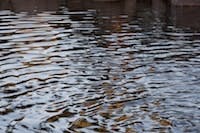The U.S. Environmental Protection Agency (EPA) Region 10 is issuing a proposal to protect one of the world’s most valuable salmon fisheries, in Bristol Bay, Alaska, from the risks posed by large-scale mining at the Pebble deposit. Science has shown that development of this mine, which is backed by Northern Dynasty Minerals and the Pebble Limited Partnership, would be one of the largest open pit copper mines in the world and would threaten one of the world’s most productive salmon fisheries. EPA Region 10 is seeking public comments on the proposal.
The Bristol Bay watershed’s streams, wetlands, lakes and ponds provide intact habitat that supports all five species of Pacific salmon found in North America: coho, Chinook, sockeye, chum, and pink. These salmon populations are critical to the health of the entire ecosystem, which is home to more than 20 other fish species, 190 bird species, and more than 40 terrestrial mammal species, including bears, moose, and caribou. Bristol Bay supports commercial, subsistence, and recreational fisheries that are worth hundreds of millions in economic yield each year and create thousands of jobs.
“Bristol Bay is an extraordinary ecosystem that supports an ancient fishing culture and economic powerhouse,” said Dennis McLerran, regional administrator for EPA Region 10. “The science is clear that mining the Pebble deposit would cause irreversible damage to one of the world’s last intact salmon ecosystems. Bristol Bay’s exceptional fisheries deserve exceptional protection. We are doing this now because we’ve heard from concerned tribes, the fishing industry, Alaskans and many others who have lived and worked for more than a decade under the uncertainty posed by this potentially destructive mine. Simply put, this will be a uniquely large mine in a uniquely important place.”
EPA Region 10 is seeking public comment on its proposal from July 21 to Sept. 19, 2014, and will hold public meetings in Alaska from Aug. 12 to 15.
In February, EPA announced it was initiating a process under the Clean Water Act to protect the Bristol Bay fisheries from mining of the Pebble deposit. The announcement followed a multiyear scientific study examining the impacts of large-scale copper mining in the Bristol Bay watershed.
EPA Region 10’s proposal to protect the Bristol Bay watershed outlines restrictions that would protect waters that support salmon in and near the Pebble deposit. These restrictions apply to impacts associated with large-scale mining of the Pebble deposit. No other lands or development are subject to the restrictions.
The Clean Water Act generally requires a Section 404 permit from the U.S. Army Corps of Engineers before any person places dredged or fill material into streams, wetlands, lakes and ponds. The U.S. Army Corps of Engineers authorizes thousands of permits every year, and EPA works with the Corps and developers to resolve environmental concerns so projects can move forward. Under Section 404(c), EPA is authorized to prohibit or restrict fill activities if a project would have unacceptable adverse effects on fishery areas.
EPA Region 10 has initially concluded that mining the Pebble deposit would affect the South Fork Koktuli River, North Fork Koktuli River and Upper Talarik Creek watersheds. The proposed restrictions are outlined in a document called the Proposed Determination. The restrictions are based on the construction and operation of a 0.25-billion-ton mine. This was the smallest of the three mine scenarios EPA analyzed in the Bristol Bay Assessment and is significantly smaller than the mine presented to Northern Dynasty Minerals investors. Even the development of this smaller mine would result in unacceptable adverse impacts.
According to EPA analyses, losses of the nature and magnitude listed above would be unprecedented for the Clean Water Act Section 404 regulatory program in the Bristol Bay region, as well as the rest of Alaska and perhaps the nation.
In addition to holding public meetings, EPA will meet with tribes for formal consultation. The Bristol Bay region is home to 31 Alaska Native Villages. Residents of the area depend on salmon both as a major food resource and for their economic livelihood. Nearly all residents participate in subsistence fishing.
Source: EPA


